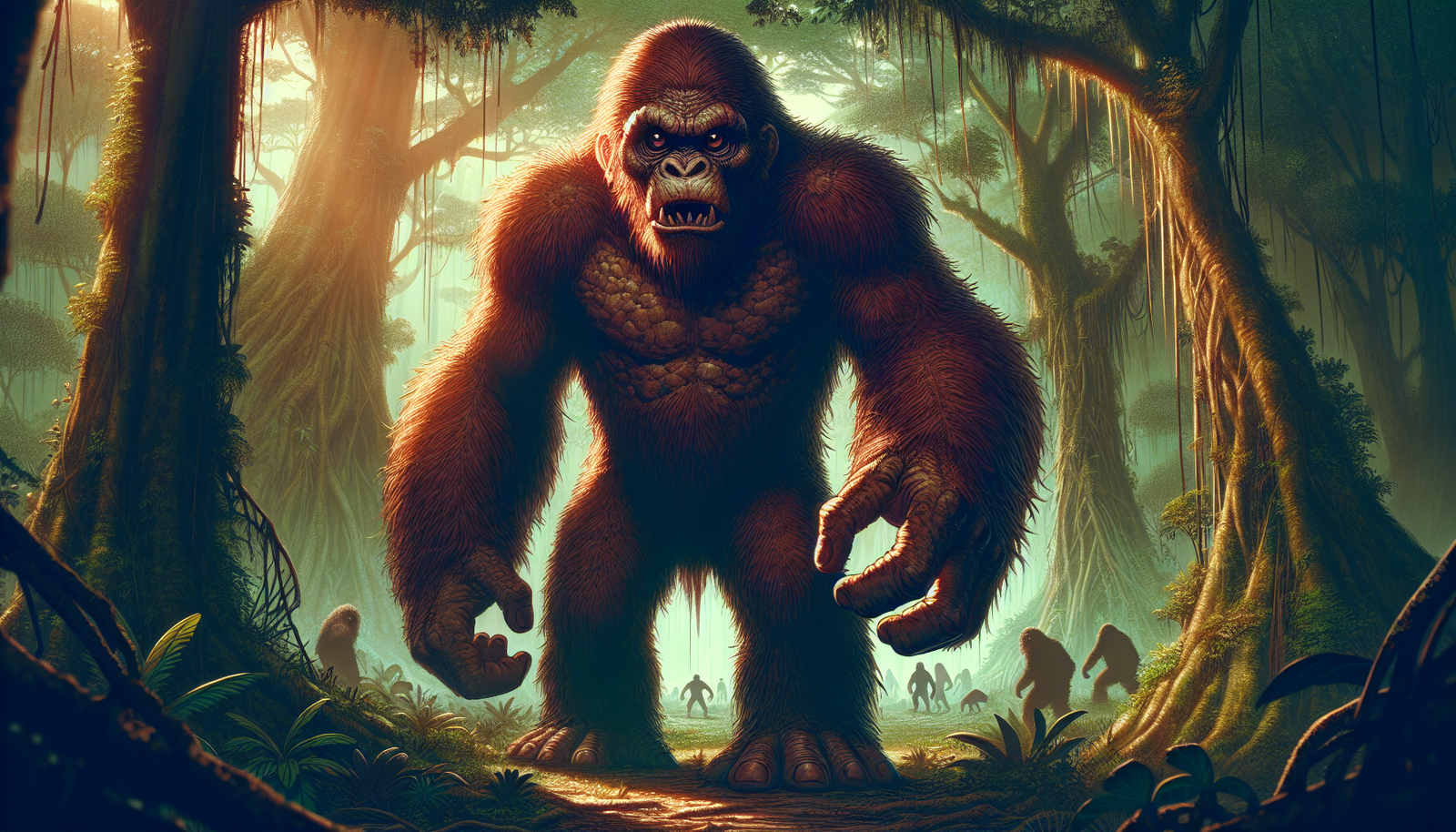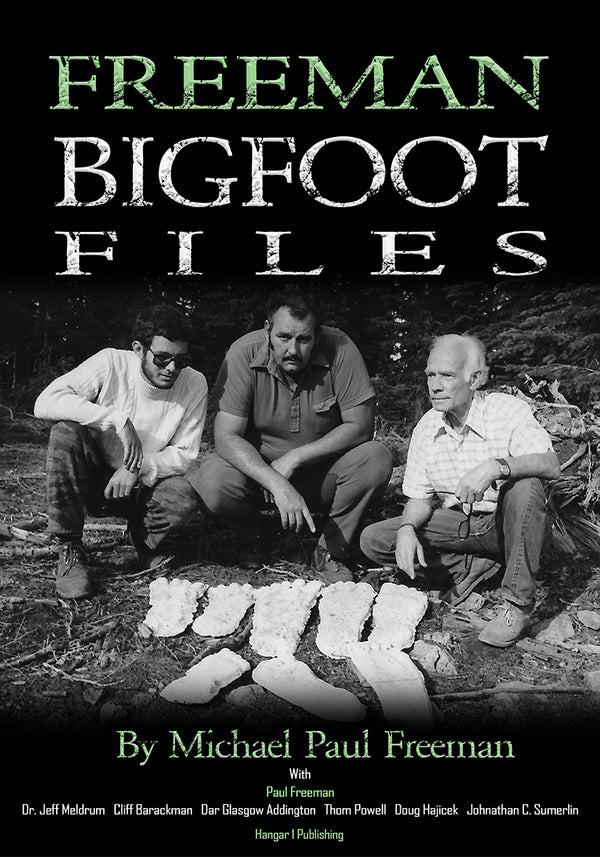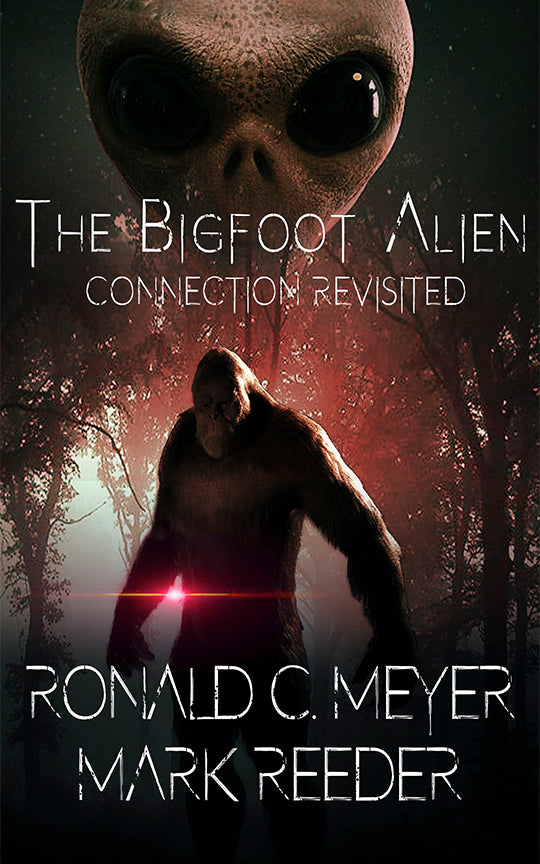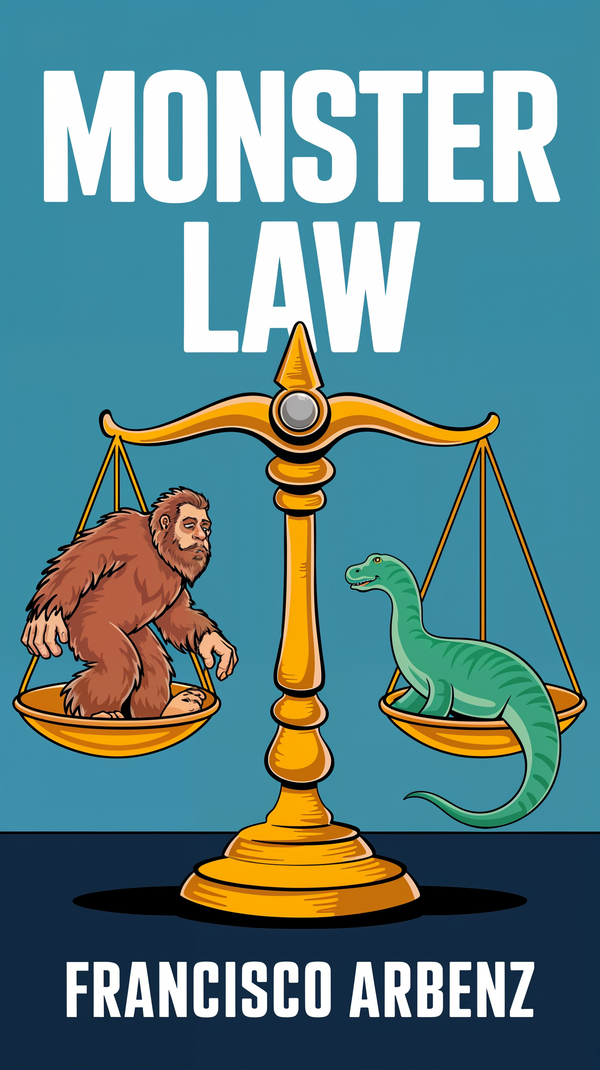Vietnam War Monsters: Bipedal Apes, Winged Humanoids, and Paranormal Phenomena

By Dr. Elizabeth Harper, Cryptozoologist
The Vietnam War, a brutal and complex conflict that spanned two decades, left an indelible mark on the psyche of those who experienced it firsthand. Amidst the chaos of battle, the dense jungles, and the unfamiliar terrain, American soldiers found themselves confronted with more than just human enemies. Reports began to surface of mysterious creatures, entities that seemed to defy explanation and challenge our understanding of the natural world. These "Vietnam War Monsters," as they came to be known, have since become the stuff of legend, captivating the imaginations of researchers, veterans, and the public alike.
As a biologist and cryptozoology enthusiast, I have long been fascinated by the accounts of these enigmatic beings. The sheer volume of reports, coupled with the consistency in descriptions across numerous eyewitness testimonies, suggests that there may be more to these stories than mere folklore or wartime hallucinations. In this article, I will delve deep into the mystery of the "Vietnam War Monsters," exploring the various accounts, theories, and ongoing investigations surrounding these elusive creatures.
The Rock Apes: Bipedal Primates of the Vietnamese Jungle
One of the most intriguing and well-documented of the "Vietnam War Monsters" is the creature known as the "Rock Ape" or "Batutut." Described as robust, muscular primates standing between 3 and 7 feet tall, these bipedal apes were reportedly covered in thick, reddish-brown or black fur, with bare faces, hands, and feet. What sets the Rock Apes apart from other cryptid primates, such as the North American Bigfoot, is their remarkably aggressive and bold behavior.
Numerous accounts from both American and Vietnamese soldiers tell of Rock Apes approaching military encampments and engaging in fierce confrontations with the troops. These creatures were known to hurl rocks at the soldiers, earning them their nickname, and even engage in full-blown battles, with reports of casualties on both sides. One particularly harrowing incident, known as the "Battle of Dong Den," allegedly involved a troop of Marines being ambushed by a large group of Rock Apes, resulting in a bloody skirmish that left several Marines injured and multiple ape corpses littering the battlefield.
The consistency in the descriptions of the Rock Apes across various eyewitness accounts is striking, especially considering that Vietnam is home to no known ape species that match their reported size and appearance. Gibbons, the only apes native to the region, are significantly smaller and do not exhibit the same aggressive behaviors described in the Rock Ape encounters. This has led to speculation among researchers and cryptozoology enthusiasts about the true nature of these creatures.
Some theories suggest that the Rock Apes may be an undiscovered primate species, perhaps a surviving population of an ancient hominid that has managed to evade scientific detection in the dense jungles of Southeast Asia. Others propose that these creatures could be the result of genetic experimentation, either conducted by the U.S. military or by the Vietnamese forces. More outlandish theories even suggest that the Rock Apes may be supernatural entities, guardian spirits of the jungle that were awakened by the chaos and destruction of the war.
Attempts to capture or study the Rock Apes have been made over the years, with limited success. In 1974, a Vietnamese expedition led by General Hoang Minh Tha ventured into the jungle with the express purpose of capturing or killing one of these elusive creatures. Despite their efforts, the expedition returned empty-handed, unable to provide any concrete evidence of the Rock Apes' existence. Similarly, in 1970, Professor Tran Hong Viet of Hanoi's Pedagogic University discovered strange, human-like footprints in the jungle and made plaster casts of them, but further investigations yielded no additional proof.
The Rock Apes remain one of the most compelling and enduring mysteries of the Vietnam War, with their true nature and origins still hotly debated among researchers and enthusiasts alike. As we continue to explore the accounts and evidence surrounding these enigmatic primates, it becomes clear that the dense jungles of Vietnam may still hold secrets waiting to be uncovered.
Flying Humanoids and UFOs: Aerial Anomalies Over Vietnam
While the Rock Apes may have been the most frequently encountered of the "Vietnam War Monsters," they were far from the only strange entities reported by soldiers during the conflict. Accounts of flying humanoids and unidentified flying objects (UFOs) add an even more otherworldly layer to the already bizarre tapestry of wartime anomalies.
The flying humanoids, described as winged, human-like creatures, were often spotted in the vicinity of military installations and bases. Eyewitnesses reported seeing these entities gliding silently through the air, their large, bat-like wings propelling them effortlessly across the night sky. Some accounts even describe the creatures as having glowing, otherworldly eyes that seemed to pierce the darkness.
One of the most compelling accounts of a flying humanoid encounter comes from U.S. Air Force Private Sinclair Taylor, who was stationed at Camp Okubo near Kyoto, Japan, in 1952. Taylor reported seeing a massive, winged creature that he initially mistook for a giant bird. As the entity drew closer, however, he realized that it had the body of a man, standing approximately 7 feet tall with a wingspan to match. Terrified by the sight, Taylor opened fire on the creature, but when he went to investigate, it had vanished without a trace.
The flying humanoid sightings were not limited to the Vietnam War, with similar reports emerging from various parts of the world throughout history. The infamous Mothman of West Virginia and the Owlman of Cornwall, England, are just two examples of winged, humanoid creatures that have captured the public's imagination and sparked countless theories about their origins and nature.
In addition to the flying humanoids, soldiers in Vietnam also reported numerous sightings of unidentified flying objects (UFOs) throughout the conflict. These sightings were not limited to the American forces, with Vietnamese troops on both sides of the war also claiming to have witnessed strange, aerial anomalies. The UFO encounters were often accompanied by reports of bizarre phenomena, such as electrical disturbances, unexplained equipment malfunctions, and the sudden appearance of mysterious lights in the night sky.
The prevalence of UFO sightings during the Vietnam War has led some researchers to speculate about a potential connection between these aerial anomalies and the "Vietnam War Monsters." Could the flying humanoids and UFOs be related to the Rock Apes and other strange creatures encountered in the jungles? Are they all part of a larger, interconnected mystery that transcends our current understanding of the natural world?
As with the Rock Apes, the true nature of the flying humanoids and UFOs reported during the Vietnam War remains a subject of intense debate and speculation. Some researchers suggest that these sightings could be attributed to misidentifications of natural phenomena, such as large birds or atmospheric anomalies, while others propose more exotic explanations, such as extraterrestrial visitations or interdimensional crossovers.
Regardless of their true origins, the accounts of flying humanoids and UFOs add an even more complex and intriguing layer to the mystery of the "Vietnam War Monsters." As we continue to investigate these aerial anomalies and their potential connections to the other strange entities encountered during the conflict, we may be forced to reconsider our understanding of the boundaries between the natural and the supernatural, the earthly and the extraterrestrial.
Paranormal Phenomena: Ghosts, Spirits, and Psychological Warfare
The Vietnam War was not only a conflict fought on the physical battlefield but also a psychological and spiritual struggle that left deep scars on the minds and souls of those who experienced it. Amidst the reports of Rock Apes, flying humanoids, and UFOs, there are also numerous accounts of paranormal phenomena, ghostly encounters, and the use of supernatural tactics as a form of psychological warfare.
One of the most infamous examples of paranormal activity during the Vietnam War was the U.S. military's use of "Operation Wandering Soul," a psychological warfare tactic designed to demoralize and terrify the Viet Cong and North Vietnamese forces. This operation involved the use of specially-recorded audio tapes that were played over loudspeakers in the jungle, broadcasting eerie, disembodied voices and ghostly wails.
The recordings, which were often made with the help of South Vietnamese volunteers and prisoners, featured unsettling sounds and messages, such as the cries of a young girl calling out for her father or the anguished moans of a soldier pleading for his comrades to help him. These haunting broadcasts were intended to exploit the Vietnamese belief in the importance of proper burial rituals and the idea that the spirits of the dead would wander the earth as restless ghosts if these rites were not performed.
The psychological impact of "Operation Wandering Soul" on the enemy forces was significant, with reports of Viet Cong soldiers fleeing their positions in terror, convinced that they were being haunted by the ghosts of their fallen comrades. The tactic was so effective that it was even featured in the 1979 film "Apocalypse Now," which depicted a fictionalized version of the operation as part of the psychological landscape of the war.
In addition to the military's use of ghostly recordings, soldiers on both sides of the conflict reported numerous encounters with paranormal phenomena in the jungles and tunnels of Vietnam. American troops told stories of ghostly apparitions, disembodied voices, and the feeling of being watched by unseen entities in the dense undergrowth. Some even claimed to have witnessed the spirits of fallen soldiers, both American and Vietnamese, wandering the battlefields and haunting the living.
One particularly chilling account comes from a group of American soldiers who found themselves trapped in a Viet Cong tunnel complex. As they navigated the dark, claustrophobic passages, they reported hearing strange whispers and the sounds of movement in the shadows. Eventually, they stumbled upon a hidden chamber, lit by a single flickering oil lamp, where they encountered a group of Vietnamese soldiers sitting in a trance-like state, seemingly oblivious to their presence.
In the center of the chamber, the American soldiers claimed to have seen a bizarre, golden statue of a woman with the lower body of a serpent or tentacled creature. The room was filled with an oppressive, otherworldly atmosphere, and the soldiers felt an overwhelming sense of dread and unease. As they attempted to investigate further, they were suddenly confronted by a disembodied voice that warned them to leave the tunnel immediately. Terrified, the soldiers fled, leaving behind the strange chamber and its eerie inhabitants.
Encounters like these have led some researchers to speculate that the Vietnam War may have been influenced by supernatural forces beyond the realm of human understanding. Could the Viet Cong and North Vietnamese forces have been aided by ancient, malevolent spirits that were awakened by the chaos and bloodshed of the conflict? Did the intense emotions and psychological trauma experienced by soldiers on both sides of the war create a kind of psychic wound in the fabric of reality, allowing ghostly entities and paranormal phenomena to manifest in the jungles of Vietnam?
While the true nature of these paranormal experiences remains a mystery, the accounts of ghostly encounters and supernatural phenomena during the Vietnam War serve as a reminder of the profound psychological and spiritual impact of the conflict on those who fought in it. As we continue to explore the strange and inexplicable events that occurred during this tumultuous period in history, we are forced to confront the possibility that the true horrors of war may extend far beyond the boundaries of the physical world.
Unique Characteristics and Behaviors of the "Vietnam War Monsters"
As we delve deeper into the accounts of the various "Vietnam War Monsters," it becomes clear that these enigmatic creatures possessed a number of unique characteristics and behaviors that set them apart from other cryptids and legendary beings. By examining these distinctive traits, we may be able to gain a better understanding of the true nature of these entities and their place within the larger mystery of the Vietnam War.
One of the most striking aspects of the Rock Apes, in particular, was their remarkable aggression and boldness in the presence of humans. Unlike the elusive and typically shy Bigfoot of North American folklore, the Rock Apes were known to actively approach and engage with soldiers, often in violent confrontations. The creatures were reported to hurl rocks at troops, hence their nickname, and even participate in full-scale battles, as evidenced by the alleged "Battle of Dong Den," where a troop of Marines claimed to have fought off a large group of these primates.
This aggressive behavior stands in stark contrast to the usual depictions of Bigfoot and other hairy hominids as gentle, reclusive creatures that prefer to avoid human contact. The Rock Apes' willingness to confront armed soldiers head-on suggests a level of confidence and perhaps even a sense of territoriality that is not typically associated with other cryptid primates.
Another intriguing aspect of the Rock Apes was their apparent social structure and tendency to travel in groups or "troops." While Bigfoot is often portrayed as a solitary creature, rarely seen in pairs or family units, the Rock Apes were frequently reported to move and operate in larger numbers. This social behavior may have contributed to their boldness and aggressive tendencies, as the presence of other members of their species could have provided a sense of security and emboldened them to engage with potential threats.
The Rock Apes also exhibited a remarkable lack of fear towards humans, often approaching soldiers at close range without any apparent concern for their own safety. This fearlessness may be attributed to the creatures' isolation in the dense, remote jungles of Vietnam, where they would have had little prior contact with human beings. The sudden influx of military personnel into their habitat during the war may have caught the Rock Apes off guard, leading to the numerous close encounters reported by soldiers on both sides of the conflict.
In addition to their unique social behaviors and lack of fear, the Rock Apes and other "Vietnam War Monsters" were often reported to be most active at dusk or during the night. This nocturnal activity pattern may have been an adaptation to the harsh, tropical environment of the Vietnamese jungle, where the dense canopy and oppressive heat would have made daytime movement and foraging more challenging. The creatures' preference for the cooler, darker hours of the day may also have contributed to their elusiveness and the difficulty in obtaining clear, daylight observations of their appearance and behavior.
The flying humanoids and UFOs reported during the Vietnam War also exhibited their own set of unique characteristics, further adding to the complexity and intrigue of the overall mystery. The winged, human-like entities were often described as having glowing, otherworldly eyes and the ability to glide silently through the air, while the UFOs were associated with strange electromagnetic disturbances and unexplained lights in the night sky.
These aerial anomalies, along with the Rock Apes and other ground-based "monsters," collectively paint a picture of a wartime landscape filled with bizarre, unexplained phenomena that defied conventional understanding. The unique characteristics and behaviors of these entities, as reported by eyewitnesses on both sides of the conflict, suggest that the Vietnam War may have been a nexus point for a variety of strange and potentially supernatural occurrences.
As we continue to examine the accounts and evidence surrounding the "Vietnam War Monsters," it becomes increasingly clear that these creatures and phenomena cannot be easily dismissed as mere folklore or wartime hallucinations. The consistency of the reports, the unique traits exhibited by the entities, and the sheer volume of eyewitness testimony all point to a larger, more complex mystery that demands further investigation and analysis.
From Bigfoot to UFOs: Hangar 1 Publishing Has You Covered!
Explore Untold Stories: Venture into the world of UFOs, cryptids, Bigfoot, and beyond. Every story is a journey into the extraordinary.
Immersive Book Technology: Experience real videos, sights, and sounds within our books. Its not just reading; its an adventure.



























